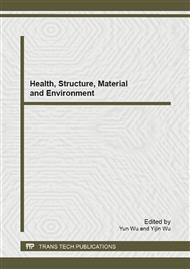p.76
p.80
p.87
p.92
p.97
p.103
p.109
p.116
p.120
Analysis of Design Strategy of Regional Green Architecture
Abstract:
For developing regional green building, it is very important to absorb the traditional architectural conception of energy conservation. Based on this, this article discusses a series of regional green building design strategies focusing on four aspects. First is responding to regional material, includes making use of local materials, modern renewal of traditional material, reuse of waste materials. Second is responding to regional natural climate, includes “closed insulation + solar energy use”, "ventilation + sunshade", "active ventilation + shade + activities insulation" and active utilization strategy. Third is responding to terrain elements, includes minimum of terrain environment damage and reduction of earthwork volume. Last is responding to regional culture, including expression of traditional materials, restructuring of traditional construction, modern interpretation of traditional regional.
Info:
Periodical:
Pages:
97-102
Citation:
Online since:
February 2013
Authors:
Price:
Сopyright:
© 2013 Trans Tech Publications Ltd. All Rights Reserved
Share:
Citation:


